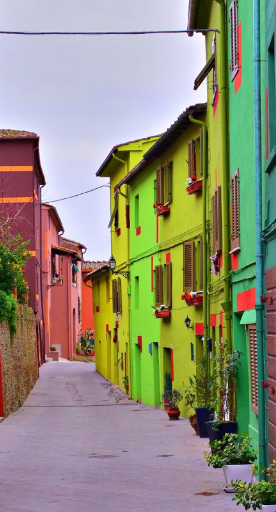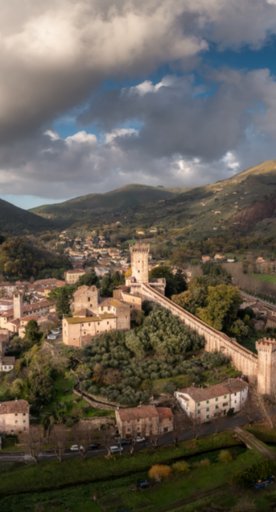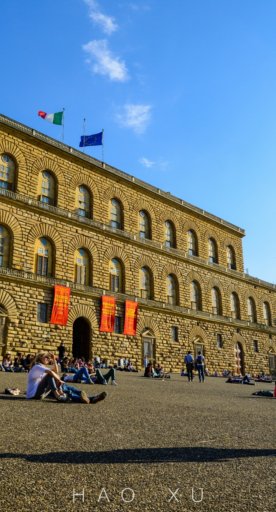Pistoia: city of art of the Apennines
Visit one of the most beautiful squares in Italy, dotted with historic and religious buildings of high artistic value
-
1.Piazza del Duomo
-
2.Romanesque churches
-
3.Ospedale del Ceppo
-
4.Della Robbia in Pistoia
Piazza del Duomo

In Piazza del Duomo, the bust of white and green marble blazes spectacularly from the outside of the Cathedral, as well as on the centuries-old stairs of the Palazzo dei Vescovi. The white-and-green scheme is also incorporated into the bricks, on the front of the historic church of Santa Maria Cavaliera that's now transformed into a civil building, and at the uppermost part of the bell tower. San Giovanni in Corte Baptistery is beautifully enriched with bas-reliefs, drips and spires in a Gothic style, completing the exquisite image of Piazza Duomo.

Valuable works of sacred art can be admired inside. Examples include the thirteenth-century crucifix by the Florentine painter Coppo di Marcovaldo and his son Salerno, preserved in the Cathedral of San Zeno, as well as an important relic, a bone fragment of the apostle James from Santiago de Compostela, located inside the marvellous silver altar of San Jacopo, a precious little temple that's a fine example of Italian and European gothic goldsmithing.
Additionally, there are more than 300 artistic masterpieces including paintings, sculptures, ceramics and jewels that are housed in the Museo Civico d’arte Antica, housed in the Palazzo del Comune, otherwise known as Palazzo degli Anziani or Palazzo di Giano, overlooking the magnificent piazza.
Romanesque churches

You find duotone patterns, which become more elaborate over the centuries, on the façades of the most important Romanesque churches in Pistoia, which are either fashioned from precious white Carrara marble or from travertine from Monsummano Terme, plus green serpentine from Prato. On the front of the churches of Sant'Andrea, San Bartolomeo and San Pier Maggiore, the geometric decorations in two-toned marble emphasizes the architectural structures and shapes. You will also appreciate the exaggerated geometry of the side-façade of the church of San Giovanni Fuorcivitas, where the striking color becomes the real protagonist.
Famous relgious works include the Pulpit of Sant'Andrea, made by the sculptor Giovanni Pisano in the parish church of Sant'Andrea, and the depiction of Jesus giving the keys to Saint Peter, surrounded by the Virgin and the apostles that's found on the architrave of the central door of the church of San Pier Maggiore, attributed to the workshop of Guido da Como.
Ospedale del Ceppo

A brightly-colored sixteenth-century glazed terracotta frieze decorates the loggia of the historic Ospedale del Ceppo, which is one of the symbols of the city. The seven bas-relief panels that make up the frieze illustrate the Sette Opere di Misericordia (the Seven Works of Mercy) with highly characterized gestures and faces. The first six works were done by the Florentine artist Santi Buglioni, a descendant of Benedetto Buglioni, who created the lunette above the portal of the nearby oratory (the Coronation of the Virgin in blue and white terracotta). The last one depicts the scene of giving drink to the thirsty, and is found on the right of the façade. It was added in the late sixteenth century by Filippo Paladini and was probably commissioned to replace a lost panel. Fragments of the original are held in the Ferri Chirurgici Room inside the Ospedale.
A historical, architectural and artistic heritage enhanced by the Spedale del Ceppo Museum, through a path that reveals its events and insights.
Della Robbia in Pistoia
We can walk through the streets of the centre of Pistoia in an ideal Robbiano itinerary, leading us to the historic church of San Giovanni Fuorcivitas where the white ceramic group is preserved, a piece of extraordinary formal refinement depicting the Visitation with the Madonna and St. Elizabeth locked in a tender embrace. It's the oldest free-standing glazed terracotta work by Luca della Robbia, one of the most illustrious Florentine protagonists in the fifteenth century. It was Andrea della Robbia, however, who in 1505 authored a lunette under the loggia of the Duomo, on the central portal that shows the Madonna and Child amongst Angels, framed by the coffers and festoons on the intrados.















































































